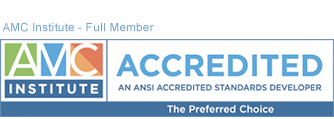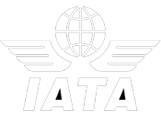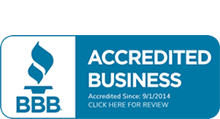Another in a series of articles related to association management selected from our reading list by:
Robert O. Patterson, JD
CEO/ Principal
The Center for Association Resources, Inc.
What is Social Media? And Who’s Using It?
It all starts with your message. Social media is a powerful marketing and communication tool which allows you to spread your message to your audiences. Social should work with – and enhance – your existing marketing efforts. Wikipedia (http://en.wikipedia.org/wiki/Social_media) defines it as “media for social interaction, using highly accessible and scalable publishing techniques. Social media use web-based technologies to transform and broadcast media monologues into social media dialogues.”
This is the first in a series of three blog posts by The Center for Association Resources that will explore the what, who, why and how of social media for associations.
Got news? Post a link to your news release, and resulting media coverage, on Facebook (http://www.facebook.com/and Twitter (http://twitter.com/). Want to take the pulse of your members or customers? Ask a question in a LinkedIn (http://www.linkedin.com/home?trk=hb_home) group. Did your CEO just give a great speech? Put it on YouTube (http://www.youtube.com/) and post the links everywhere.
Social media is instant and interactive. Use it to talk to your members, and to listen to what they say back. Use it to mobilize your members, your constituencies, your friends and your followers to advocate on your behalf to lawmakers and thought leaders.
If you’re already using social media in your marketing, make sure your message is consistent and your content is up to date. Yes, it’s free, but you need to invest staff time and resources to do it right. If you’re not yet using social media in your association, here’s what you need to know about what’s out there and how to integrate it into your current plan.
Facebook is the best known and most widely used social media site. More than 741 million people worldwide use it, more than 155 million of them in the United States. That makes the American population of Facebook larger than the population of Russia or Japan. And every time one of them logs on to Facebook, he or she is a potential target of your message. And you thought it was just for catching up with old friends from high school or posting vacation photos.
Setting up a Facebook page is easy. Click on “Create a Page” on the bottom right side of your personal page. Follow the step-by-step instructions and start posting. But don’t do it in a vacuum. Put a link to it on your website and in your newsletter. Ask your Facebook friends to “like” your page. Within your organization, designate a staff member to maintain, monitor and moderate the page. Have more than one administrator, to ensure continuity should that person leave.
Try to post on your Facebook page at least once a week. Use a mix of association announcements – it’s a great way to plug events, association updates and relevant news from your industry sector. Your Facebook page is a great way to drive people back to the heart of your brand: your website. When you update a section, post a link and tell your followers to check it out. No big announcements this week? Highlight an interesting or helpful section of the website with a “Did you know … “ post with a link to it.
Use Twitter to send people to your Facebook page and your website. Twitter has more than 100 million users worldwide, more than half of whom log in daily to follow their interests. Unlike Facebook, you do not have to “friend” followers, so you can follow anyone and anyone can follow you. More and more people are getting their news first from their Twitter feeds. News of the recent east coast earthquake spread on Twitter almost as fast as the quake itself. With just 140 characters per “tweet” (Twitter post) it is an ideal environment for links back to your website, newsletter or Facebook page. Like you did for Facebook, have a designated tweeter to maintain a consistent message and style. And make sure you respond quickly to any questions, comments or negative tweets. Future Public Relations classes will be devoted to companies and organizations that failed to respond quickly to public complaints.
LinkedIn is the third social media site you should consider for your association. It is the most business-oriented of the three and has more than 120 million members in more than countries and territories. More than half its users are outside the United States. Organization leaders should have their own accounts, and regularly post relevant news, comments and questions. It also is becoming a great place to find new hires. Join or create a group and participate in the discussions there. Companies or associations can set up profiles and have followers just as individuals do. Have you set up yours?
And then, there’s Google Plus (https://plus.google.com/up/start/?continue=https://plus.google.com/&type=st&gpcaz=23db4111), the new kid on the social media block that’s attracted more than 43 million users in a very short period of time. The platform has been open to the public (previously, user were invited to join) about a week or so. Business profiles are planned, but not yet available, but association leaders should be active on Google+. One of the best reasons why? It’s Google.
Besides being the place where most people begin their Internet searches, Google’s umbrella includes YouTube and Blogger, so Google+ offers a great way to leverage all of those platforms. One of its most attractive features is “Hangouts (http://www.google.com/+/learnmore/),” which lets you chat with up to nine people through your computer or mobile device for free. For associations with staff in various cities, Hangouts can be an alternative to teleconferences.
Do you need to be on every one of these sites? Only you can answer that based on your message and your audience. A comprehensive social media strategy can enhance your current marketing plan. But before you jump in, figure out what you want to say – and to whom. And commit to it. An out-of-date, irrelevant social media presence is worse than none it all. Then, have fun engaging your audience. You’ll wonder why it took you so long.
We would be pleased to discuss this in more detail with you! Contact The Center for Association Resources today.







